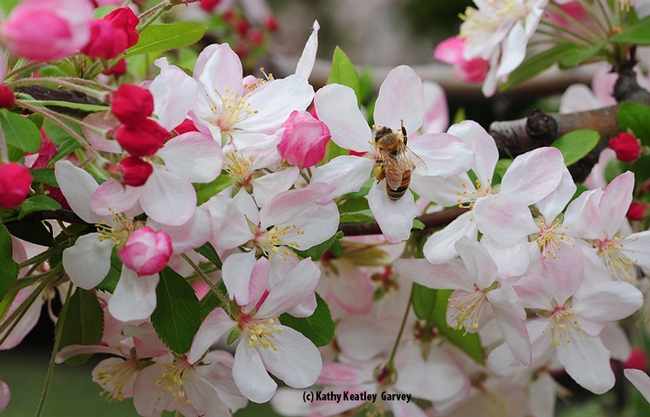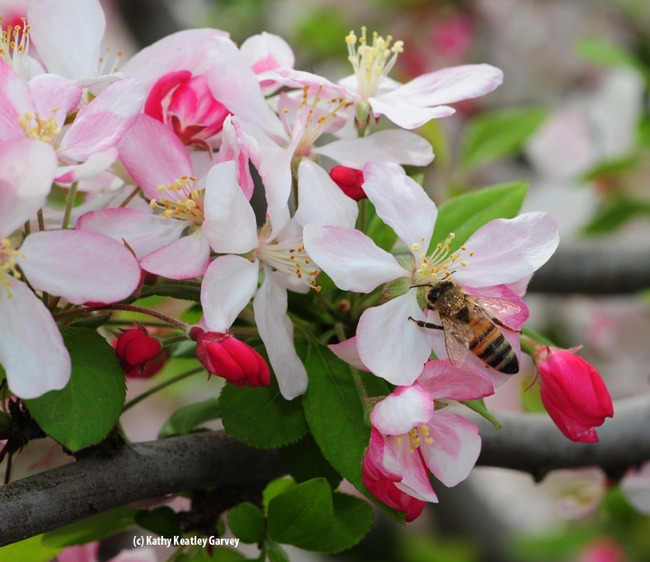You can tell it's almost spring when you hear bees buzzing on the flowering crab apples.
Spring officially starts Friday, March 20, but don't tell that to the bees.
They're in the midst of their spring build-up.
Meanwhile, California Agriculture Day beckons.
The California State Beekeepers' Association and other ag-affiiiated organzations are gearing up for the annual California Ag Day, part of National Agriculture Week.
California Ag Day, free and open to the public, takes place from 11:30 a.m. to 1 p.m., Wednesday, March 18 on the west steps of the state capitol.
There you'll see a John Deere tractor parked on the steps, 4-H'ers and FFA'ers showing their animals, and ag industries displaying educational material and offering samples. Generally, it's a day to celebrate agriculture and thank the farmers and growers for the bounty that we tend to take for granted. This year's theme is “California Agriculture: Breaking new Ground." The focus: the importance of soil health to our food supply and all of agriculture.
Said Secretary of Agriculture Karen Ross: "National Agriculture Week gives us the opportunity to celebrate agriculture, an industry that provides a safe, abundant, and affordable food supply, a strong economy, and a world of job opportunities.”
If you stop by the California State Beekeepers' Association booth on California Ag Day, you can learn first-hand about bees from the beekeepers and "honey bee guru" Extension apiculturist (emeritus) Eric Mussen of the UC Davis Department of Entomology and Nematology, who retired last June after 38 years of service.
Generally, they're asked:
- How are the bees doing?"
- "What can we do to help?"
- "How difficult is it to keep bees?"
- "How can I learn beekeeping?"
- "What's wrong with my bees?"
There's a reward, too, for visiting the booth. You'll receive a sweet treat: a honey stick.
Did you know that it takes honey bees 10 million floral visits to make a pound of honey? (Source: Bees of the World by Christopher O'Toole and Anthony Raw). "The members of a single hive may make four and a half million visits to flowers in the course of one day's work and more than one thousand workers will die every day in the summer," they write. "Cause of death? Sheer exhaustion. Life expectancy? Af the height of the nectar-gathering season, a mere six weeks."
That's something to think about the next time you see the foragers going about their bees-ness.
Attached Images:

Honey bee foraging on flowering crab apple. (Photo by Kathy Keatley Garvey)

Check out the pollen load of this honey bee on flowering crab apple. (Photo by Kathy Keatley Garvey)

This bee is making a beeline for the next crab apple blossom. (Photo by Kathy Keatley Garvey)

This bee is coated with pollen from the crab apple blossoms. These photos were taken in the Sonoma Cornerstone gardens. (Photo by Kathy Keatley Garvey)